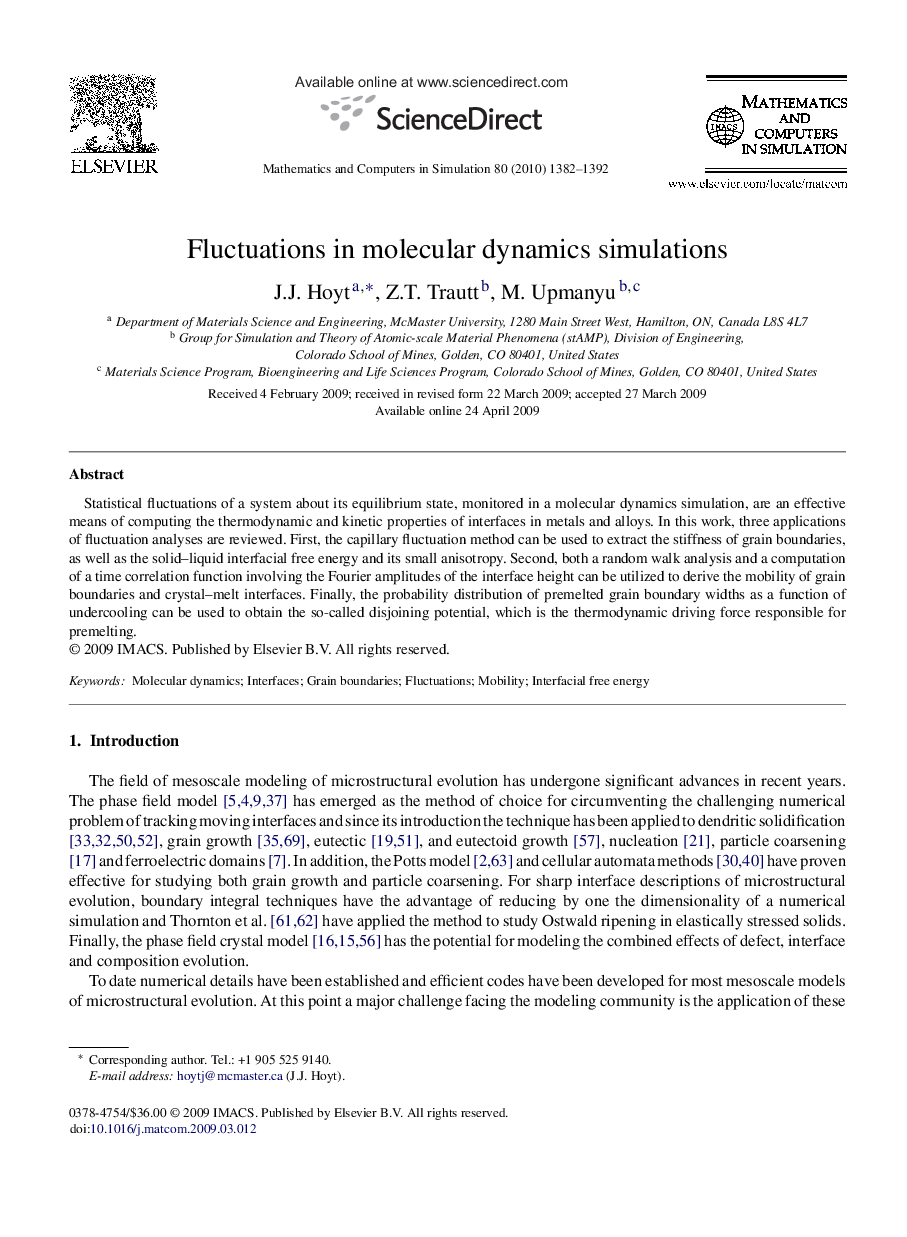| Article ID | Journal | Published Year | Pages | File Type |
|---|---|---|---|---|
| 1139761 | Mathematics and Computers in Simulation | 2010 | 11 Pages |
Statistical fluctuations of a system about its equilibrium state, monitored in a molecular dynamics simulation, are an effective means of computing the thermodynamic and kinetic properties of interfaces in metals and alloys. In this work, three applications of fluctuation analyses are reviewed. First, the capillary fluctuation method can be used to extract the stiffness of grain boundaries, as well as the solid–liquid interfacial free energy and its small anisotropy. Second, both a random walk analysis and a computation of a time correlation function involving the Fourier amplitudes of the interface height can be utilized to derive the mobility of grain boundaries and crystal–melt interfaces. Finally, the probability distribution of premelted grain boundary widths as a function of undercooling can be used to obtain the so-called disjoining potential, which is the thermodynamic driving force responsible for premelting.
